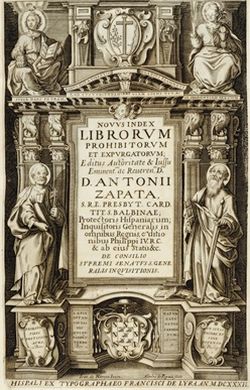 Issued in the aftermath of the Council of Trent (1545-63), the Index of Forbidden Books maintained by the Inquisition became an obstacle to the circulation of books and ideas in Europe and its colonies well into the 20th century – it is only in 1966 that the Catholic Church formally abolished it. Among the famous victims of censorship was of course Galileo, whose Dialogue on the Great World Systems, Ptolemaic and Copernican (1632) was to remain in the index until 1824. Less known is the fact that medieval science could also catch the attention of the Sacred Congregation of the Index. A good example here is the Latin [H]ortus Sanitatis (Garden of Health), the first comprehensive natural history encyclopedia, published by Jacobus Meydenbach in Mainz (Germany) in 1491 ˗˗ and not to be confused with the “smaller Ortus”, an herbal printed in the same city with a text in German (Gart der Gesundheit) by Peter Schöffer (Gutenberg’s former partner) in 1485.
Issued in the aftermath of the Council of Trent (1545-63), the Index of Forbidden Books maintained by the Inquisition became an obstacle to the circulation of books and ideas in Europe and its colonies well into the 20th century – it is only in 1966 that the Catholic Church formally abolished it. Among the famous victims of censorship was of course Galileo, whose Dialogue on the Great World Systems, Ptolemaic and Copernican (1632) was to remain in the index until 1824. Less known is the fact that medieval science could also catch the attention of the Sacred Congregation of the Index. A good example here is the Latin [H]ortus Sanitatis (Garden of Health), the first comprehensive natural history encyclopedia, published by Jacobus Meydenbach in Mainz (Germany) in 1491 ˗˗ and not to be confused with the “smaller Ortus”, an herbal printed in the same city with a text in German (Gart der Gesundheit) by Peter Schöffer (Gutenberg’s former partner) in 1485.
The book contains four treatises (tractati): De Herbis (for the most part, a reprint of Johannes de Cuba’s book on curative plants, 1484); De Animalibus (on terrestrial creatures); De Avibus (on flying creatures); De Piscibus (on sea creatures); De Lapidibus (on gems, stones, and minerals); plus, a short essay on the color and smell of urine (De Urinis). As one would expect, the text is a compilation of earlier sources, such as the pseudo-Dioscorides, Claudius Galen, Auycen (Avicenna), or Albertus Magnus. Most of the 1,066 (!) chapters of the first edition are headed with a woodcut: illustrations make this book a must-have for bibliophiles. Some universities, like Cambridge (Inc.3.A.1.8 [37]) own an exemplar that was entirely hand-colored.
Cornell’s copy (Hist. Sci. RS79 H81+) is incomplete: the hand-made initials are missing, and only one woodcut, representing Adam and Eve under the Tree of Life, was enlivened with some color: there is some golden yellow applied on the forbidden fruits [ill. 1]. Indeed, the unnamed fruit of the Garden of Eden became “an apple” for Christians under the influence of the story of the golden apples in the Garden of Hesperides.[1] What it lacks in color, the copy in Ithaca makes up for with precious information about the control of “science” in 17th century Spain.
The Hortus Sanitatis was a very popular woodcut book, reprinted seven times between 1496 and 1517 (in Strasburg, Paris, and Venice). It may come as a surprise that the Spanish Inquisition viewed it as worth an intervention. There is evidence that a cleric employed by the Sacred Congregation examined our copy and expurgated it. First, there is a note on the first page [ill. 2] that reads,Expurgo este libro conforme el nuebo indiçe y expurgatorio
del año de mil y seiscientos y treinta y tres por comision de los santos
inquisidores y lo firmo en Toledo p. 2 de mayo de el dicho año. Signed [Simone?]
Censorship on a large scale in the Iberian Peninsula began in 1558 with a royal decree banning the introduction of all foreign books in Spanish translation. Later, it extended to all kinds of books, but it was particularly aggressive in its denunciation of Spanish literature, unorthodox theologians and philosophers such as Erasmus, as well as humorous writers such as Juan Huarte de San Juan.[2] The papacy’s plan to have local inquisitors publish their own Index of Forbidden and Expurgated Books was not as successful as anticipated. Only Spain and Portugal published their own expurgatory Indices after 1600. The first Spanish Index librorum prohibitorum et expurgatorum was printed in 1612 in Madrid, under the auspices of Inquisitor-General Bernardo de Sandoval y Rojas, Archbishop of Toledo. Several editions followed in later decades, authorized by the inquisitors Zapata (1632), Sotomayor (1640 and 1667) and Marín (1707), respectively. From only 72 pages in 1559 and almost 300 for the double-Index of 1583-1584, the Novus Index of 1632 [not 1633, ill. 3] ended up containing over a thousand pages.[3] As José Pardo Tomás says, “these Indices clearly delineate the shape of print culture that was considered outside the reach of Spanish readers. They serve to frame censorship.”[4]
I did not find the Hortus Sanitatis in the Index as such. Yet, it would not be the first time that a book contains the testimony of a specific type of a local censoring activity in the form of expurgations and crossed-out passages. The cleric who expurgated the Hortus Sanitatis may or may not have reported his activity. It is only in 1634 that the Central Council of the Inquisition sent an edict to all the regional tribunals, calling for reports on each book seized or banned from libraries.[5]
In Cornell’s copy, all the twenty or so censored passages are located in the treatise De Lapidibus. They concern alchemy, or the magical use of rare stones. For example, the censor barred the passage about diamonds that says, “Dicunt magi, quod [lapis] valet contra hostes et insaniam, et indomitas bestias… contra venena et incursions fantasmatum et incuborum” [ill. 4]. For our censor, only dodgy magicians may claim that diamonds offer protection against ghosts and evil spirits. Similarly, alabaster is decidedly not a good protection against poison, neither is it of any help during legal proceedings. The reader is prevented from reading that lapis Aquila (the eagle stone) guards us against magic spells; that one may use the celidonis stone, allegedly found in the womb of swallows, cures insanity (contra insaniam), if properly placed under one’s left armpit (sub sinistra assela); or that topaz, when placed in the marital bed, favors concordia and sexual reproduction. Why would the Inquisition be annoyed here? After all, nothing is censored in passages about seemingly more disturbing anomalies and monsters, such as sirens, flying dragons, the monacus marinus (half-fish, half-monk), or the draconpedes (half human, half-snake) [ill. 5]. The image of a woman eating living toads is a case in point. Censorship overlooked it, as if this was compatible with religious orthodoxy. Maybe it was perceived as some kind of innocuous fantasy. By contrast, “Alchemy was one of the sept ars demonials [sic], for the aid of Satan was necessary to the transmutation of metals, and the Philosopher’s Stone”.[6]
On the other hand, it was somewhat difficult to distinguish between chemistry and alchemy.[7] After 1247, Roger Bacon, one of the greatest authorities of the Middle Ages, became fascinated with the Secretum Secretorum, a translation from a manuscript in Arabic which pretended to reveal the most profound and hidden teachings of Aristotle, aka “the Philosopher”. Bacon explained that a new medicine, based on the knowledge of “special” stones, and combined with alchemy and astrology, could provide a regimen for health, and teaches how to prolong human life. In the same spirit, but with much more scientific credibility, a half-century later, Arnau de Villanova [ill. 6] produced a manuscript titled De conservatione juventutis et retardatione senectutis (On the Conservation of Youth and the Retarding of Old Age, 1309). In 1299, the tribunal of the Inquisition in Paris arrested him for his writings about the Antichrist, but released him almost immediately because of his powerful connections. A former professor of medicine at the University of Montpellier, the Catalan doctor would soon cure three popes in Avignon. The Spanish Inquisition was less lenient: for example, in 1305, the Inquisitor in Valencia forbade the possession or the reading of any of Villanova’s books. One cannot fail to notice, however, that, “the Writ of Condemnation [by] the Council of Tarragon in 1316 was directed specifically against these theological works. His scientific works were not condemned. On the contrary, they remained extremely important documents and were collected, copied, edited, printed, excerpted, and embellished over the succeeding centuries.”[8]
It looks like alchemy became a greater concern later, in the 17th century – also the main period for witch-hunts across Europe.[9] Based on the archives of the Inquisition, José Pardo Tomás established that the Spanish Inquisition’s relative control of science reached its peak between 1583 and 1683, with more than two hundred scientific books seized and declared heretical. “Medicine was the area most affected, owing to the prohibition of German medical doctors, solely on the ground of their Protestantism. Next came astrology and alchemy, censored for their delving into the occult or for opposition to orthodox Aristotelianism”[10]. The Church reacted to the growing success of the Swiss physician and alchemist Theophrastus von Hohenheim, aka Paracelsus (1593-1541), who considered himself the disciple of Spanish alchemists such as Villanova and Ramón Llull. “After 1565… an increasing number of physicians, alchemists, and mystics, generally united under the name of “Paracelsianism”, started to publish works on Paracelsus’s doctrines. This movement rapidly spread throughout Europe and, by 1600, Paracelsus had gained followers in Spain, England, Denmark, Germany, France, Switzerland, the Low Countries, and in Italy… The interest of the Congregation for the Index in Paracelsus may thus be seen as a response to his forceful presence on the intellectual stage.”[11] In 1632, Pierre-Jean Fabre of Castelnaudary drew bold parallels between the chemical operations of alchemy and transubstantiation in his Alchymista Christianus (Toulouse: Apud Petrum Bosc, bibliopolam. M. DC. XXXII). Strangely enough, only the works of Geber (Mūsā Jābir ibn Hayyān, 721-815) appeared as such in the 1588 list of books completely prohibited by the tribunal of Toledo. In most places, the Church forbade the reading of Paracelsus after 1599. No trace of Fabre, whose books may not have been imported and made available in Spain. Based on the sole Index librorum prohibitorum and expurgatorum, alchemy was not at the center of preoccupations.[12]
In general, it is difficult to know how strong the Spanish Inquisition’s grip on readers really was anyway. Sometimes, the main goal of censorship was to raise money: Henry Charles Lea mentions that, “in 1604 [the tribunal in] Toledo imposed a penance of 3000 ducats on Giraldo Paris, a German of Madrid, guilty of sundry heretical propositions, including the assertion that St. Job was an alchemist.”[13] The Indices contain many curious omissions. The authors of the 1632 version of the Index simply forgot to include Galileo [ill. 7]… Besides, according to Henry Kamen, there is no evidence that the Church would raid bookstores or purge, let alone burn, entire book collections. The catalog for the sale of the private library of a nobleman in Madrid in 1651 contains 200 works listed in the Index Librorum Prohibitorum.[14] Another historian writes that, “science was actually one of the cultural products that censorship affected the least, despite the fact that the earlier historiography of Spanish science had portrayed a sixteenth-century Spain firmly closed to science. First editions of practically all books printed on medicine, alchemy, astronomy, and botany were in royal [libraries] (for example, El Escorial) or [in] private libraries.”[15]
Still, there are fascinating examples of local censorship, as in Cornell’s expurgated copy of the 1471 Hortus Sanitatis. A Spanish “inquisitor” crossed-out and blackened several sentences in the early 1630s, to prevent anyone to read them. The intentions of the censor are unclear, however. By erasing entire passages about the magical virtue of stones, he (voluntarily or involuntarily) acted like a defender of scientific and legal rigor against pseudo-science and superstition.
[1]A student probably added the drawn penis.
[2]Frederick A. de Armas, Don Quixote among the Saracens: A Clash of Civilizations and Literary Genres, University of Toronto Press, 2011.
[3]Robin Vose, “Introduction to Inquisition censorship documents.” Hesburgh Libraries of Notre Dame, Department of Rare Books and Special Collections. University of Notre Dame, 2010. Online resource.
[4] José Pardo Tomás, Ciencia y censura: la inquisición española y los libros científicos en los siglos XVI y XVII, Editorial CSIC – CSIC Press, 1991, p. 49.
[5] David Goodman, “Intellectual Life under the Spanish Inquisition: A Continuing Historical Controversy”, in History, Vol. 90, No. 3 (299), 2005, p. 385.
[6] Charles Henry Lea, History of the Inquisition in Spain, Macmillan, 1887, vol. 3, p. 136.
[7] A book by Pierre-Jean Fabre (1588-1658), a medical doctor and practicing alchemist trained in Montpellier, and printed in Toulouse in 1628, bears the following title: Myrothecivm spagyricvm, sive, Pharmacopoea chymica occvltis natvrae arcanis, ex Hermeticorum medicorum scriniis depromptis abunde illustrata. Cornell Library, Division of Rare Books and Manuscripts, History of Science QD25 .F33.
[8] Juanita Daly, “Arnald of Vilanova: Physician and Prophet”, Essays in Medieval Studies, Loyola University, 2011. The alchemical writings ascribed to Villanova and reprinted several times between 1504 and 1686 are not authentic.
[9] Witch-hunts were less important in Spain than in other countries after the early 1500s: the last massacre occurred in 1507 in Calahorra (province of La Rioja), where thirty alleged witches were strangled and burned. The fear of witches coming en masse from the Basque country following brutal persecutions by the French prompted the Inquisition to led a massive investigation in Navarre between 1609 and 1614, but the ecclesiastical judge Salazar expressed skepticism, and recommended in his report that all defendants should be pardoned because innocent of serious crimes. Secular courts continue to press for greater severity everywhere in Spain but as Joseph Pérez notes, “Out of 307 witch trials that transpired in the regions of Cuenca and Toledo during the Spanish Inquisition, no death sentences were ever given to witches by the Inquisitors” (The Spanish Inquisition: A History, New Haven, CT: Yale University Press, 2005, p. 82.)
[10] David Goodman, op. cit. The issue of “orthodox Aristotelianism” is a complicated one.
[11] de Vries & Leen Spruit, “Paracelsus and Roman censorship – Johannes Faber’s 1616 report in context”, Intellectual History Review, 28:2, 225-254, 2018. Most editions of Paracelsus were printed in the Protestant cities of Basel or Strasburg.
[12] Gebri arabis philosophi ac alchimistae acvtissimi. De alchemia traditio summae perfectionis in duos libros divisa. ítem: Líber investigationis magisterii eiusdem (Argentorati [Strasburg]: Zetner, 1598) in Libros prohibidos por el Consejo Supremo y el Tribunal de Corte, Toledo, 1588.
[13] Charles Henry Lea, op. cit., vol. 2, gives as his source MSS. of Library of Univ. of Halle, Yc, 20, Tom. I.
[14] Henry Kammen, The Spanish Inquisition: An Historical Revision, Yale University Press, 1997 p. 117-119 and 315.
[15]Miguel López Pérez, “Spanish Paracelsus Revisited and Decontaminated”, Azogue, 7, 2010-2013, p. 344.
Laurent FERRI
Curator of the pre-1800 Collections
Kroch Library (Cornell University), Division of rare Books and Manuscripts
My acknowledgments to Professor Simone Pinet for her help.
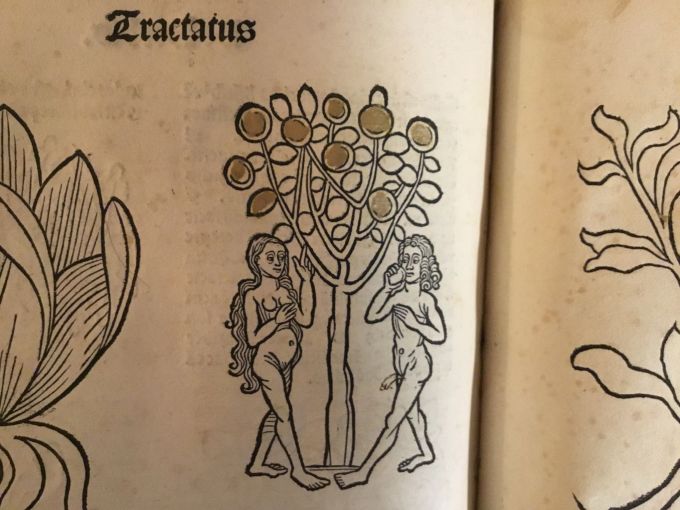
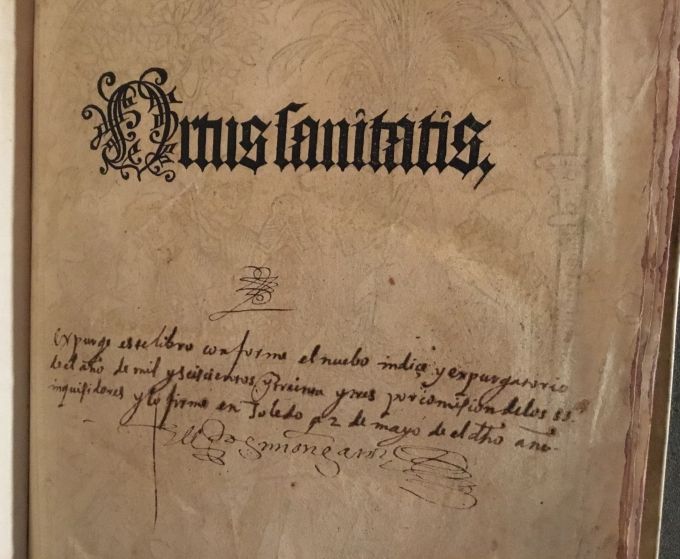
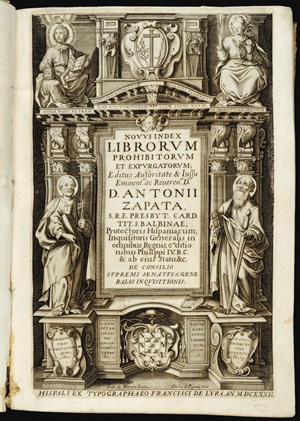

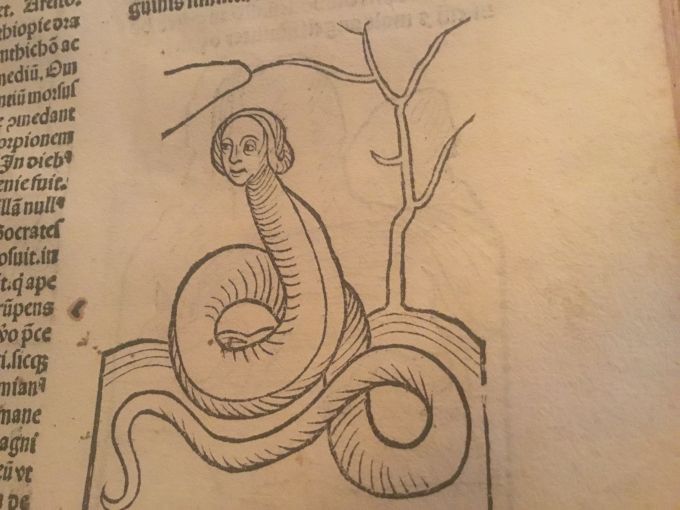
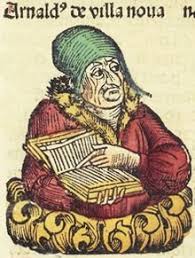
{ 0 comments… add one now }